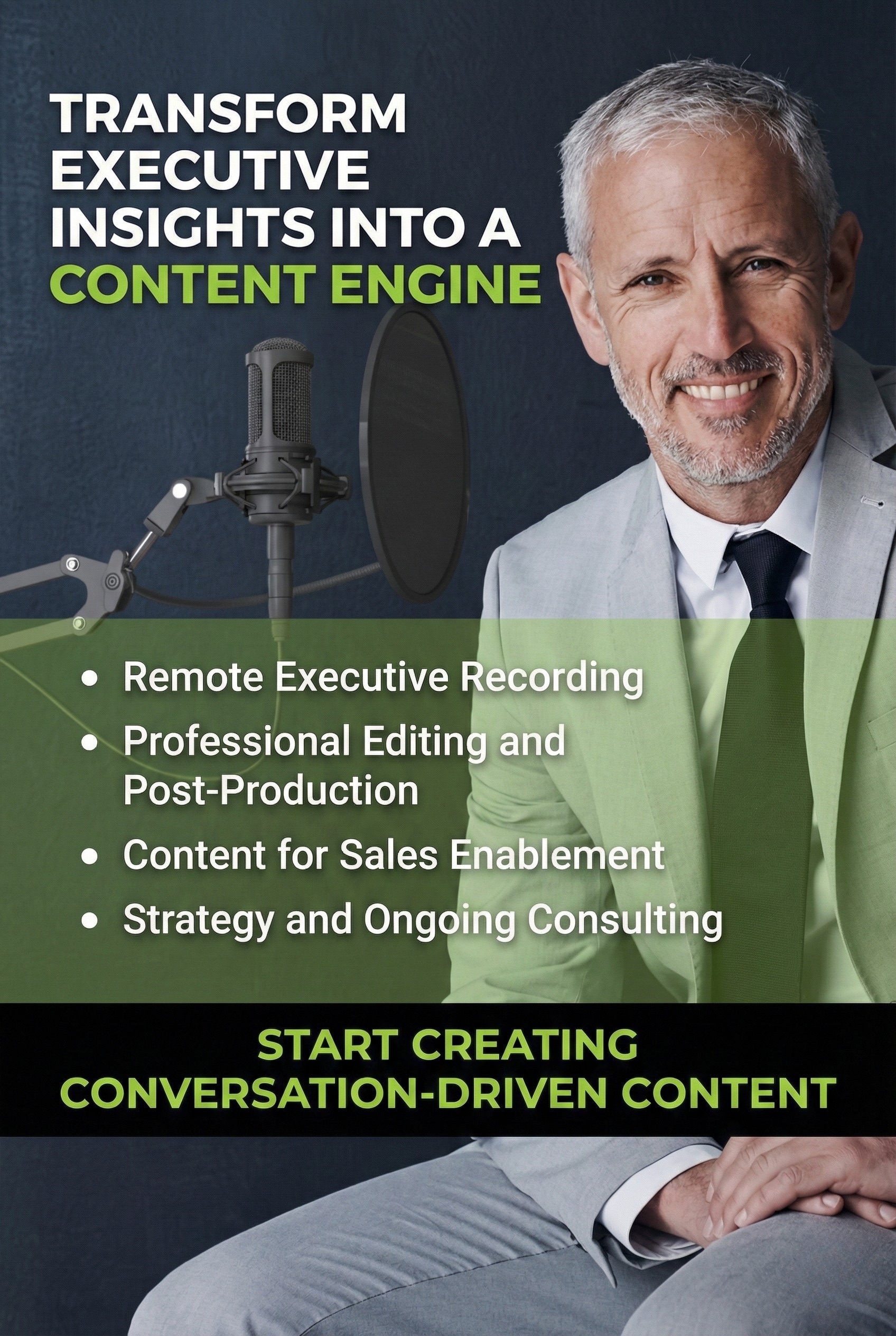The biggest challenge I see with senior Marketers is their tendency to build the future of content marketing based on what worked in the past. They default to outdated methods, ignoring modern strategies simply because they’ve never used them before – or worse, they don’t even know they exist.
Take remote video production, for example. Not only is the term vague to many, but it’s also completely off their radar. They’re not searching for it because they don’t even realize it’s an option. Meanwhile, we’re producing high-quality content at scale – faster, more efficiently, and at a lower cost than traditional video production ever allowed.
Instead of spending months planning, scripting, and coordinating multiple teams and vendors, today’s content creation is agile, adaptable, and designed to meet the speed of modern business.
No matter how much you argue quality versus quantity, the company with a quantity of “good enough” content that connects will always win.
A. lee Judge
The Shift: From Overproduced to Authentic Marketing Content
Traditional Video Production required heavy planning, a large budget, and endless logistics – hiring crews, renting equipment, securing locations, and scripting every second of footage. That process might have made sense in an era when content had to last for years.
But today, content has a much shorter shelf life; not because the content isn’t as good, but because if it is good, the consumer wants more. Competition is greater, so no matter how much you argue quality versus quantity, the company with a quantity of “good enough” content that connects will always win.
The modern approach flips the model. Your employees, executives, and subject matter experts are your actors. The content is real. Customers crave authenticity. They don’t want polished corporate messaging filtered through layers of Marketing, Legal, and HR.
Your customers want to hear from real people – the engineers who built the product, the leaders who shape the vision, the teams who solve real problems.
Right now, we are drowning in AI-generated fluff, overly manicured marketing copy, and soulless corporate messaging. And customers see right through it. They want real conversations, real expertise, and real human connection.
What the Best Companies Are Doing Differently

Some companies do understand the present and future of content marketing.
Smart businesses boost their marketing effectiveness by:
- Creating video and podcast content consistently, not as one-off projects but as an ongoing strategy
- Talking about their products and services openly.
- Featuring employees who interact directly with customers.
- Not overthinking the production – they just hit record and provide value.
And you know what happens? Their customers start to feel like they know them. They trust them. They engage with them because they see them regularly on their social feeds, talking about real challenges and solutions.
Meanwhile, their competitors – who are still stuck in the slow, bureaucratic approach – are nowhere to be found.
Outdated marketing teams are busy doing ridiculous marketing acts such as:
- Gatekeeping their own content.
- Overthinking every piece, making it expensive and infrequent.
- Assuming Video Production and podcasting are massive undertakings when, in reality, the right process makes it easy, repeatable, and scalable.
Why Content Volume Matters
Here’s the reality: If you only create content at a “perfect” level – highly scripted, overproduced, and meticulously vetted – you will move too slowly. You won’t have enough content to be present when your customers are in the market for what you sell.
Modern content creation is about frequent, high-value conversations that educate and connect, not volume for the sake of volume. It means showing up consistently so that when a customer is ready to buy, your content is already there, waiting for them.
The Compliance Conundrum
I get it, corporate red tape is real. Compliance and legal reviews exist for a reason. But at some point, we have to recognize that slow approval processes are hurting the business more than the risk of saying something imperfect. If every single sentence has to be vetted, you are actively undermining your ability to communicate with your customers.
Instead of fighting against content creation, companies should be working to make the process smoother. Compliance teams need to evolve alongside Marketing, finding ways to support rapid content creation rather than slow it down.
The Measurement Trap: Why the Best Content is Hardest to Track
Marketing leaders often gravitate toward content that can be easily measured—campaigns with clear attribution models, lead forms, and trackable conversions. But the best content, the kind that builds trust and long-term relationships, is often the hardest to measure.
Why? Because real influence doesn’t always fit neatly into a dashboard. When a prospect watches a video from your CEO, listens to a podcast episode featuring your engineers, or engages with your brand’s thought leadership over time, that impact accumulates. By the time they’re ready to buy, they already trust you—but there’s no single data point that tells you exactly which piece of content sealed the deal.
The brands that embrace content as a long-term strategy, rather than a short-term metric, are the ones winning today.
This is Not the Past: This is the Future of Marketing
The most common reaction I hear from companies is: “It can’t be that simple.” They assume content creation must be a huge, complex project because that’s how it was in the past. But this isn’t the past.
Customers have changed. The way they consume content has changed. Their expectations have changed. And yet, businesses are still stuck in the 80s and 90s; overproducing content one piece at a time, targeting one persona, with one massive budget spend.
That model is dead.
The companies winning today are the ones that are nimble, unafraid to put themselves out there, and willing to communicate at the speed of modern content consumption. If you’re still waiting for the perfect plan, the perfect production, and the perfect message, you’ll be waiting while your competitors take the lead.
It’s time to evolve. Let’s talk about it.





